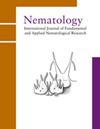Soil nematode communities in riverbanks non-invaded and invaded by Fallopia japonica across diverse environmental conditions
IF 1.2
4区 生物学
Q2 ZOOLOGY
引用次数: 0
Abstract
Soil nematode communities are one of the most used bioindicators for assessing soil health and soil conditions. However, they are dependent on the presence of plants, some of which, known as ‘invasive’, affect local biodiversity when established. This study aimed to compare the communities of soil nematodes in riverbanks non-invaded and invaded by Fallopia japonica at three sites characterised by different environmental conditions. Our findings indicated that the ecosystem had a larger impact on the nematode communities than did the environmental variability at the study sites. Soil properties, such as pH, moisture content and organic-carbon content, differed significantly amongst the sites, but the nematode communities remained similar. Organic-carbon content was lower, and soil pH was higher, in the ecosystem with invasive F. japonica. Total nematode abundance, the abundances of fungivores, herbivores, omnivores and predators, and the maturity indices were significantly lower with invasive F. japonica. Fungivorous nematodes are essential for breaking down organic matter and releasing nutrients. Herbivorous nematodes respond to changes in the vegetation, and omnivorous and predatory nematodes contribute to the overall biodiversity and ecological balance in the soil ecosystem, so their lower abundance suggests a disturbance in the soil food web. The lower maturity indices suggested a disturbance or degradation of the soil ecosystem, which could have secondary negative effects on plant growth, nutrient availability and ecosystem resilience. These findings indicate that invasion both decreased the abundance of important soil organisms and disrupted the cycling of nutrients, potentially leading to long-term negative consequences for the invaded ecosystems. Understanding and managing the effects of invasive plants such as F. japonica are crucial for preserving soil health and promoting sustainable ecosystem functioning.不同环境条件下非入侵和入侵河岸的土壤线虫群落
土壤线虫群落是评估土壤健康和土壤条件最常用的生物指标之一。然而,它们依赖于植物的存在,其中一些被称为“入侵性”的植物在建立时会影响当地的生物多样性。本研究旨在比较三个具有不同环境条件的地点未被日本法洛入侵和入侵河岸的土壤线虫群落。我们的研究结果表明,生态系统对线虫群落的影响比研究地点的环境变异性更大。土壤性质,如pH、水分含量和有机碳含量,在不同地点之间存在显著差异,但线虫群落保持相似。入侵粳稻生态系统中有机碳含量较低,土壤pH值较高。总线虫丰度、食真菌、食草动物、杂食动物和捕食者的丰度以及成熟度指数均随入侵日本血吸虫而显著降低。食真菌线虫对分解有机物和释放营养物质至关重要。草食线虫对植被的变化有反应,杂食性和捕食性线虫有助于土壤生态系统的整体生物多样性和生态平衡,因此它们的丰度较低表明土壤食物网受到干扰。成熟度指数较低表明土壤生态系统受到干扰或退化,这可能对植物生长、养分供应和生态系统恢复力产生次要负面影响。这些发现表明,入侵既降低了重要土壤生物的丰度,又破坏了养分的循环,可能对被入侵的生态系统造成长期的负面影响。了解和管理入侵植物(如F.japonica)的影响对于保护土壤健康和促进可持续的生态系统功能至关重要。
本文章由计算机程序翻译,如有差异,请以英文原文为准。
求助全文
约1分钟内获得全文
求助全文
来源期刊

Nematology
生物-动物学
CiteScore
2.60
自引率
33.30%
发文量
67
审稿时长
3 months
期刊介绍:
Nematology is an international journal for the publication of all aspects of nematological research (with the exception of vertebrate parasitology), from molecular biology to field studies. Papers on nematode parasites of arthropods, and on soil free-living nematodes, and on interactions of these and other organisms, are particularly welcome. Research on fresh water and marine nematodes is also considered when the observations are of more general interest.
Nematology publishes full research papers, short communications, Forum articles (which permit an author to express a view on current or fundamental subjects), perspectives on nematology, and reviews of books and other media.
 求助内容:
求助内容: 应助结果提醒方式:
应助结果提醒方式:


